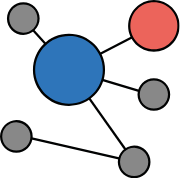Disability Data Cabo Delgado Metuge Chiure, 2021
Mozambique, 2021
Get MicrodataIdentification
HDX_disability-data-cabo-delgado-metuge-chiure_vEXT
Disability Data Cabo Delgado Metuge Chiure, 2021
| Name | Country code |
|---|---|
| Mozambique | MOZ |
Data on type of disability, cause of disability, gender and age distribution in Metuge and Chiure districts
Census/enumeration data [cen]
Scope
| Topic |
|---|
| Basic Needs |
| Protection |
| Other |
Coverage
Mozambique
Producers and sponsors
| Name |
|---|
| Light for the World |
Data collection
| Start | End |
|---|---|
| 2021-10-01 | 2021-12-31 |
| Name |
|---|
| Light for the World |
The advantage of the house-to-house survey compared to the Washington Group of Short Questions survey is that we have an indication of the various disability types, even though it has not been a medical diagnosis. However, as it has not been an all population survey, we do not know the disability prevalence.
• The data analysis leads to a number of interesting considerations that require further investigation before making any conclusions. For example,
-
Why are some disability types more prevalent with women compared to men? (e.g. has it to do with responsibilities and tasks)
-
Why is epilepsy (especially among children) so high? (e.g. is it related to other
illnesses – such as Nodding Syndrome in South Sudan and Uganda)
- Why is there such a huge number of children and youth with disabilities compared to adults and older people? (e.g. is that due to the house-to-house methodology, the questions asked, have adults and older people migrated less to safer IDP sites, etc)
• To answer the question what this analysis means in order to make humanitarian responses disability inclusive additional investigation would be needed on the barriers that persons with disabilities face, and how these barriers can be eliminated. See also the Disability Inclusive Rapid Gender Analysis report.
Data Access
Creative Commons Attribution International
http://www.opendefinition.org/licenses/cc-by
Metadata production
HDX_disability-data-cabo-delgado-metuge-chiure_vEXT
| Name |
|---|
| HDX |
2023-03-03
